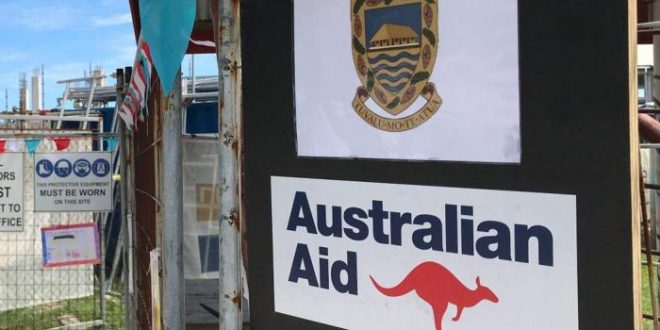The spread of COVID-19 will “dwarf” Australia’s aid resources and force a rethink of how to help and maintain a strategic presence in the region, according to a new government strategy.
Key points:
- Australia’s aid money will need to be redistributed because of COVID-19
- Australia’s focus will be more directly aimed at the Pacific, Timor-Leste and Indonesia
- $280 million of aid has already been re-allocated because of coronavirus
The Partnerships for Recovery plan by the Department of Foreign Affairs and Trade is being released Friday and sets out a new approach for Australia’s development assistance over the next two years.
The changing approach sees the Pacific, Timor-Leste and Indonesia nominated as “first-tier priorities”, narrowing the focus of Australia’s aid.
The strategy relies on redirecting existing funding to focus on health security, stability and economic recovery in the region.
“The scale of the COVID-19 crisis will dwarf the resources we have available, including through our ODA [Official Development Assistance] budget,” the document states.
Already, $280 million of aid has been re-allocated because of COVID-19, including $100 million to help Pacific countries pay for the basic costs of running their countries.
Scholarships and volunteering, which have been curbed by the limits on international travel, are among the existing programs that have had funding redirected to COVID-19-related help.
In a statement, Foreign Affairs Minister Marise Payne described the new policy as “an unprecedented pivot of our development program”.
“In partnership with our neighbours, we are responding directly to their essential needs during this pandemic,” she said.
The Australian Council for International Development (ACFID) has welcomed the approach, including the emphasis on remaining the “partner of choice” for countries in the region.
But its chief executive Marc Purcell voiced concern about the limits of “repurposing” existing aid programs.
“In 2005, prime minister John Howard announced a new, additional $1 billion humanitarian package for Indonesia after the devasting tsunami,” he said.
“To underpin this COVID-19 strategy, the Australian Government should allocate a new, one-off $2 billion injection over four years at the next Federal Budget.
“It is very clear that Australians think we should share our expertise and increase our financial support to end COVID-19 beyond our shores.”
Polling commissioned by ACFID found 72 per cent of respondents agreed that Australia should support poorer countries to help tackle COVID-19 by providing expertise and increased financial support.
Could COVID-19 cause political unrest in the region?
“Countries with weaker systems of governance may struggle to deliver essential services and maintain consensus around necessary isolation and distancing measures,” it states.
“Prolonged economic downturns could lead to unrest and political instability.”
It specifically raises the prospect of COVID-19 leading to civil unrest in South-East Asia.
“The already fragile social contract could be tested in a number of countries, with risks of political upheaval that could threaten regional stability.”
The Partnership for Recovery strategy is an interim measure, as DFAT was already in the process of reviewing its approach to aid when the coronavirus pandemic hit.
Beyond aid funding, DFAT is pointing to the need for assistance from both the public and private sectors, highlighting examples such as visa extensions for Pacific seasonal workers and making the most of free trade agreements.
The strategy continues Australia’s approach of working closely with multilateral organisations and focusing on support for women and girls in particular.
 The Argus Report Read about it!
The Argus Report Read about it!





